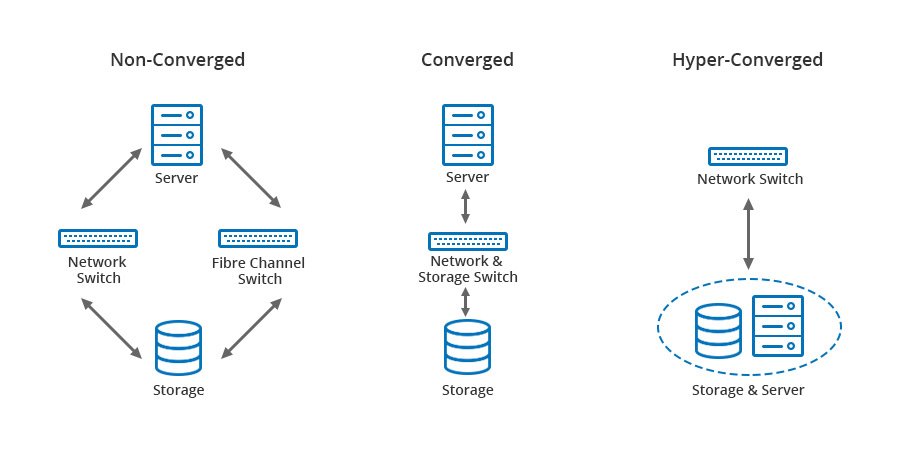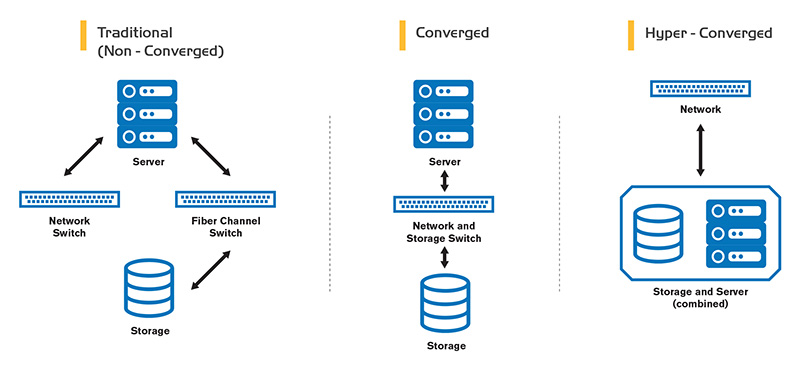Hyperconverged Appliance
There is no present combination between Vx, Rail manager and https://Dlrc-Rmsarat.ro/community/profile/lenorebottrill/ v, Center in the kind of plugins. With that stated, there doesn’t appear to be any major holes in between the management tools. I appreciate how you can see detailed hardware on each node through v, Center. EMC has actually refocused much required attention into this product line with the bulk of advantages expected (however not yet seen) on Vx, Rail 3.
Preliminary conversations with consumers show that there is extremely strong interest in the item and that is most likely the case do to the improved configure-to-order options, more competitive prices, and the reality that it becomes part of the higher EMC environment. My preliminary experience with it in the AHEAD Laboratory and Hyper-converged infrastructure vs NAS and SAN shared storage Instruction Center was very favorable; I had no concerns deploying the device and the automated deployment wizards were flawless.
Nowadays, anyone can write a lovely roadmap, but the secret will be if EMC and VMware have the ability to deliver on it. Many of the functions that I am excited to see are dealing with things that I think about to be weaknesses, such as better management tools, integration/consolidation, and additional information services that are not totally developed in the present variation of Vx, Rail.
check out this one about
Best hyperconverged infrastructure systems vendor 2022
https://cibmsolutions.com/community/profile/tonibrubaker22/.
5 release in June will be an essential event for the item and for EMC. If effective, it will establish itself as a strong competitor in the HCI space and will officially clear much of the staying unpredictability triggered by its predecessor, VSPEX Blue. Here are some follow-up points that I intend to address over the next couple of months: Vx, Rail Manager (EVO: RAIL Manager) supplies a streamlined GUI for consumers, with the advantage being that it empowers personnel with restricted experience to handle the solution.
Hyper-converged infrastructure vs NAS and SAN shared storage
Curious to see how Vx, Rail snaps into other EMC management tools (Vision) for larger consumers. This is specific to Vx, Rail 3. 5 and the all-flash nodes. I am eagerly anticipating seeing efficiency and capacity numbers once we allow deduplication and compression. The AF version has incredible density potential on the storage front, with 38 TB of usable SSD capability prior to dedup and compression in a 2U form element.
Refraining from doing so indicates that it will be hard to adjust compute/memory/storage ratios as workloads alter gradually without developing new clusters.
 A Hybrid-Converged Infrastructure Appliance? How DataCore’s New HCI-Flex Goes Above and Beyond Hyperconverged 1.0 : @VMblog
A Hybrid-Converged Infrastructure Appliance? How DataCore’s New HCI-Flex Goes Above and Beyond Hyperconverged 1.0 : @VMblogLet’s chat and get you up to speed with Dell Vx, Rail on Equinix Metal.
More efficient IT operations1 Lower infrastructure costs1 Most likely to make better, much faster, data-driven decisions 2.
Hyperconvergence for Service Providers and MSPs
Today’s organizations want IT to have less moving partswhile still using the same or expanded resources to users. This demand has actually led to a shift: Away from a one-to-one relationship in between physical servers and storage Towards a many-to-one relationship in between virtual devices and a single-storage controller One significant complication with virtualizing work, however, is that it increases storage capability requirements, https://thecraftplatform.com/hyperconverged-infrastructure-hci-systems-solutions/ typically resulting in a massive volume of redundant information.
Fortunately, assembled facilities (CI) fixes these problems. By combining workloads, you improve procedures and make your company perform better. As CI evolves, hyperconverged infrastructure (HCI) is the natural next step. HCI is growing in appeal, with an projected increase in CAGR at 22% from 2019-2023. Experts in IT often see HCI as the finest opportunity for organizations to becoming more like the cloudthat is, https://darkdeepweb.Com/Community/profile/alenakintore620/ delivering IT as a service.
 Hyperconverged Infrastructure: A Definitive Guide DataCore
Hyperconverged Infrastructure: A Definitive Guide DataCoreIt works by utilizing foundation. is a software-based method to converging storage and procedures. This usually means implementation on commodity elements. Importantly, the term ‘hyperconverged’ here does not imply that this innovation transcends to routine converged facilities. Assembled facilities reduce the need for big, physical setups, enabling you to assemble and enhance multiple systems at when.
 Hyper Converged Infrastructure (HCI) vs Converged Infrastructure (CI) : Detailed Comparison » Network Interview
Hyper Converged Infrastructure (HCI) vs Converged Infrastructure (CI) : Detailed Comparison » Network InterviewIn a non-converged architecture, physical servers operate a virtualization hypervisor that manages each of the virtual machines (VMs) that have been created on the server. For data storage, there are typically three options: A storage-area network (SAN) Direct-attached storage (DAS) Network-attached storage (NAS) With converged architecture, storage is connected straight to the physical server.
Converged vs Hyperconverged Infrastructure
In this setup, https://www.immobiliarelive.net/non-categorizzato/hyper-converged-infrastructure-vs-nas-and-san-shared-storage/ flash storage is generally utilized. (The requirement for costly SAN and NAS, in specific, is removed.) Hyperconverged infrastructure has a storage controller function that runs as a service on every node in the cluster, which is why this is categorized as software-defined storage. Most typically, important information that you require to gain access to quickly is kept regional (hot storage) while less essential data is kept on the real servers (warm or freezer).
Assembled infrastructure is a technique to data center management that aims to decrease compatibility issues in between storage systems, servers, and network gadgets. A secondary aim of CI is to lower costs that are associated with physical parts consisting of whatever from flooring area and cooling to power and cabling. CI integrates storage and calculate into a single physical device that is little, dynamic, and powerful.
Traditional storage normally includes: A controller A rack of shelves with SSD or HDD arrays Converged storage combines these parts into a node-based storage platform that provides exceptional redundancy. Everything is consisted of in a single box, and you can scale simply by including more nodes when needed. Assembled storage solutions are offered in a wide variety of sizes, and they might be all flash or hybrid selections.
Rather than adding a brand-new shelf, as in traditional storage, Hyperconvergence for Service Providers and MSPs you offload the work to a converged storage system. This guarantees that there is a feasible information storage service for the foreseeable future. There are many benefits to this option, consisting of: Better combination Easier management Lower costs In a typical unified architecture, the compute, network, and storage parts stay separate.
What Is Hyperconverged Infrastructure (HCI)?
Using nodes is clear in Nutanix’s Acropolis hypervisor. ( Source) This option makes sense for organizations that release information center platforms that use the same vendor across multiple hardware innovations. It also enhances security substantially. Unified architecture tends to be fairly pricey, which can be a stumbling block for organizations wishing to gain the advantages of a converged facilities.
Storage management in CI systems is processed as an application. This results in a converged, merged platform. Networking is essential to a degree, and it’s typically accomplished through the hypervisor, which implies that no real pieces of networking hardware are needed. Unlike virtual architecture, CI is generally made up of just storage and calculate.
There are many benefits to this method: Save time on deployment Reduce release costs Streamline overall management through the marriage of data center controls When the leading advantages of CI are thought about, it is simple to see why so numerous organizations are adopting this innovation. A few of the most compelling benefits of CI consist of: CI is basically a plug-and-play option.
